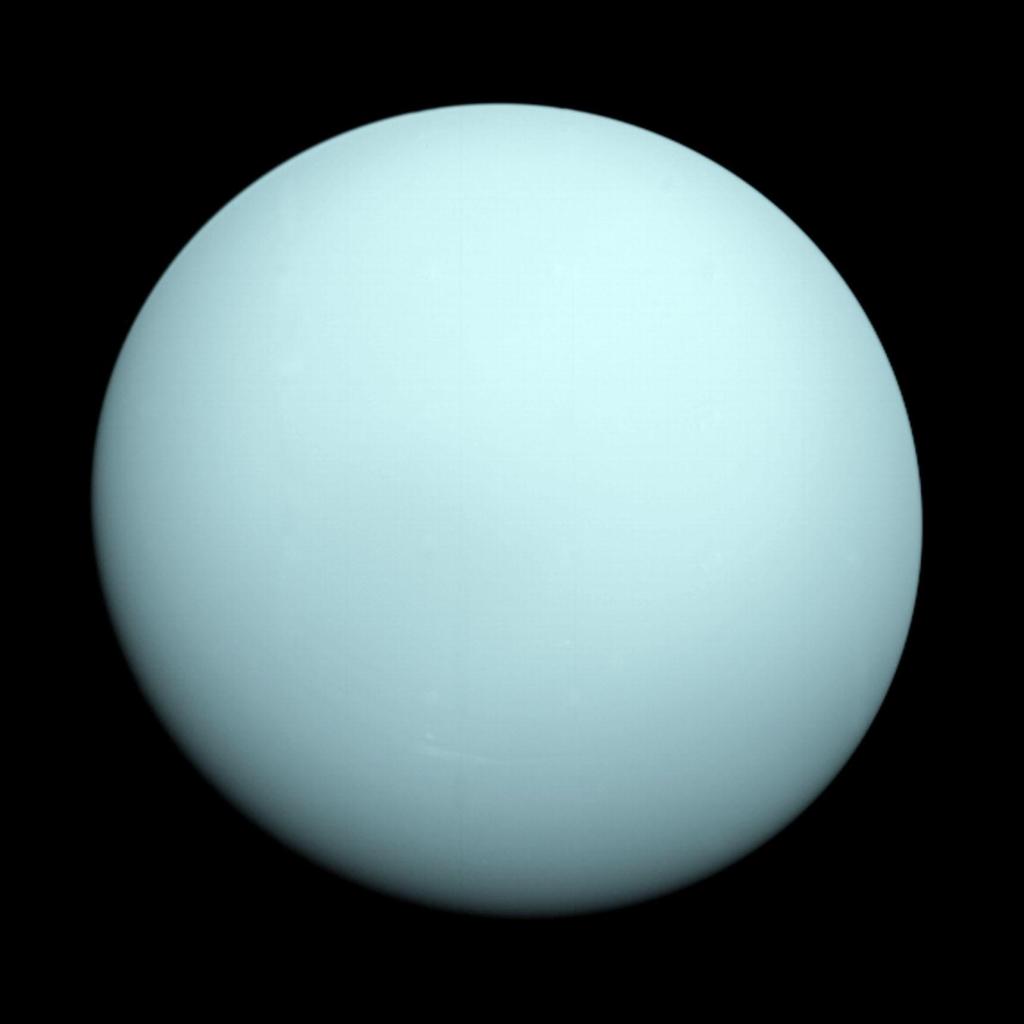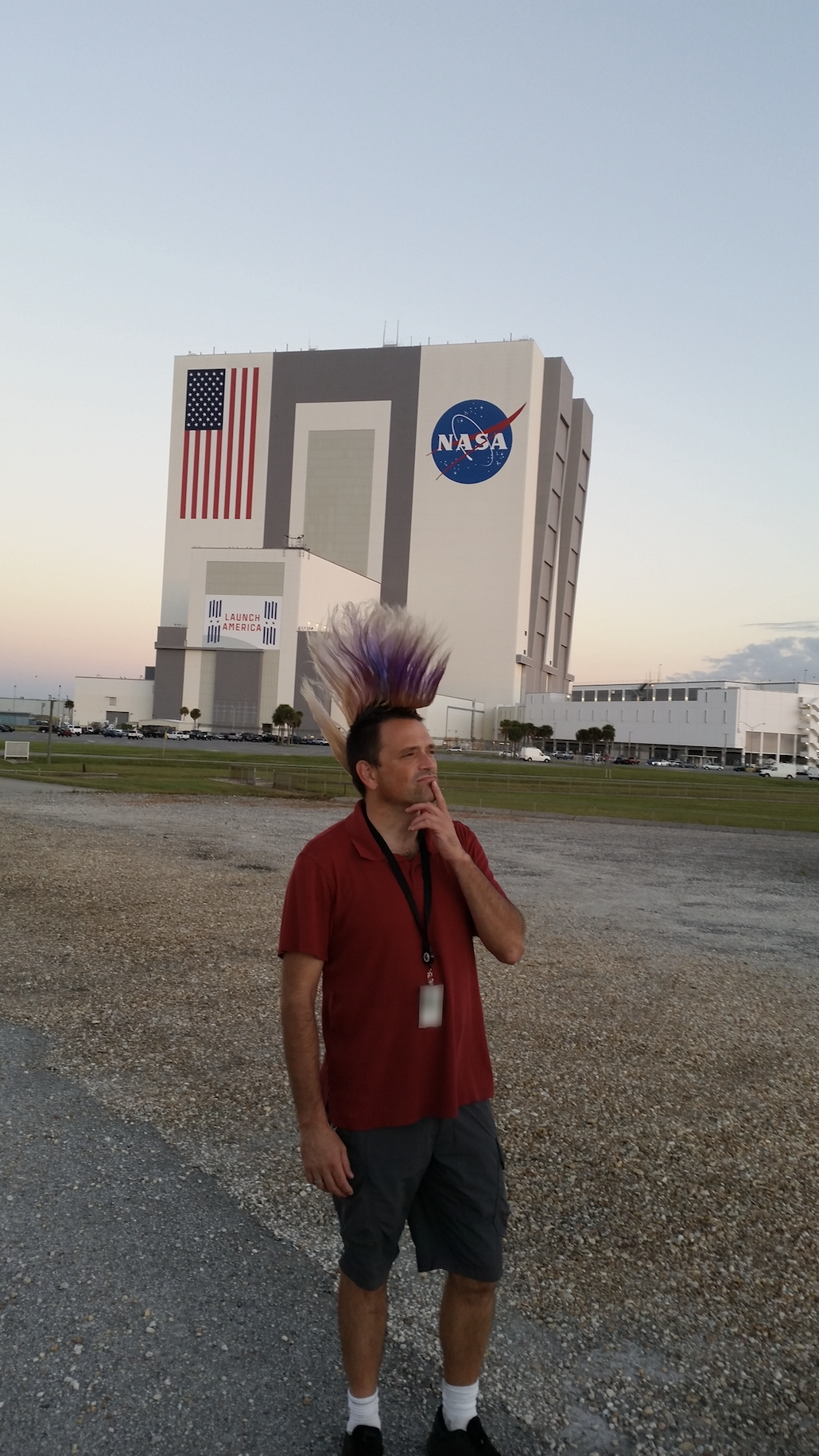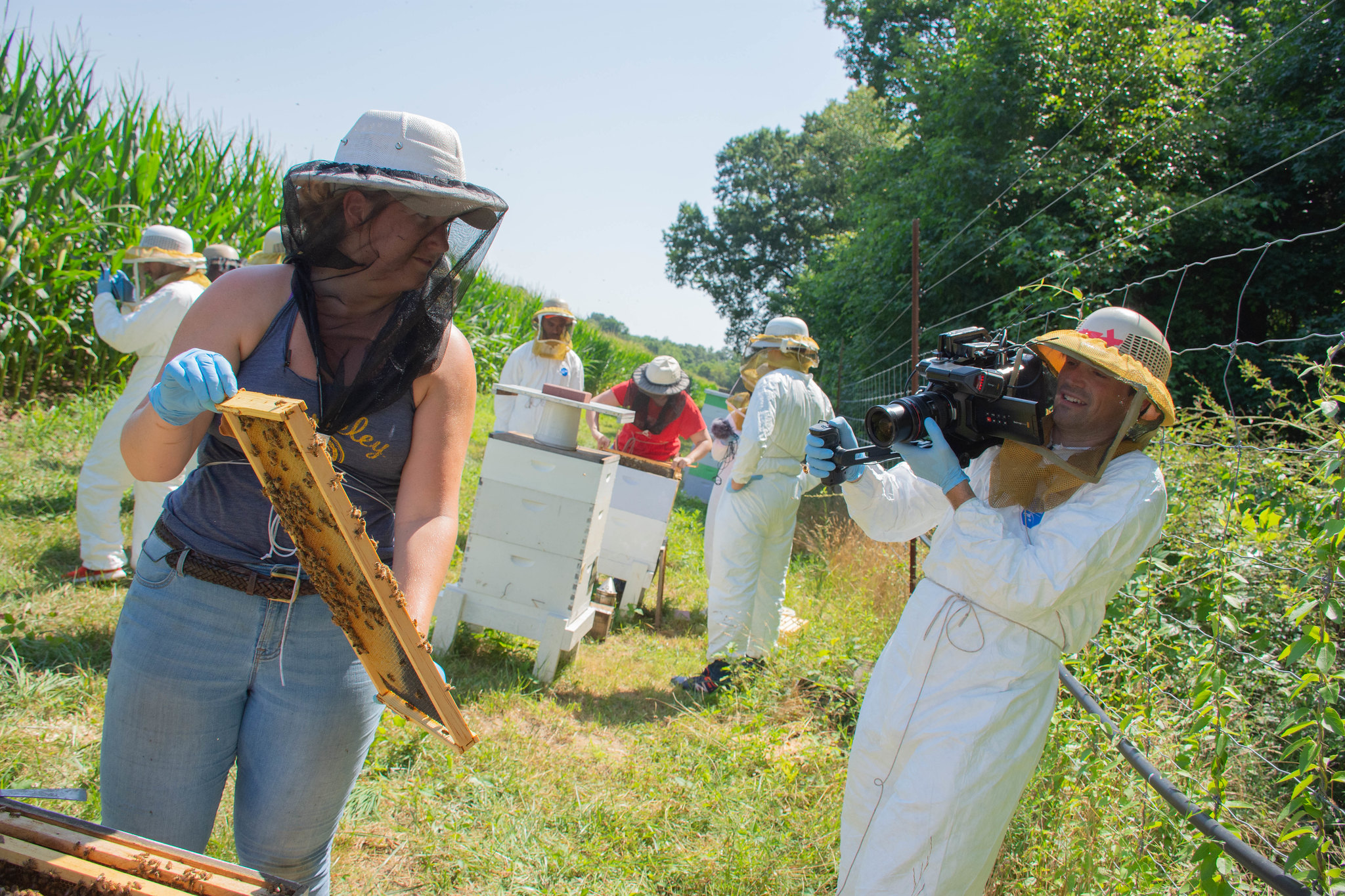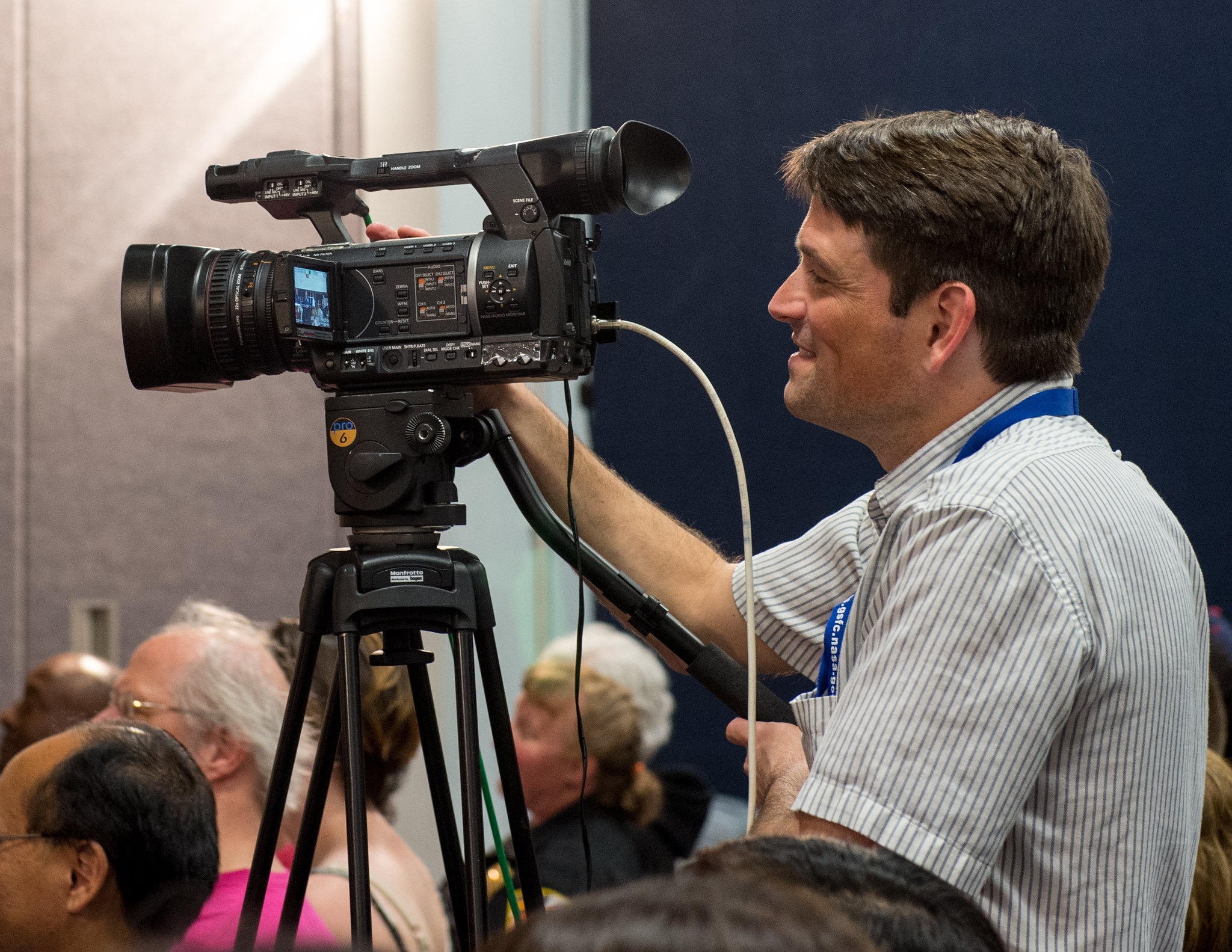Name: John Caldwell
Title: Multimedia Specialist
Formal Job Classification: Production Assistant
Organization: Office of Communications (Code 130)
How do you help support Goddard’s mission? What is most interesting about your role here at NASA Goddard?
I am a multimedia specialist for the Office of Communications, which means I work for Goddard TV. I am a videographer and I manage the studio. I also help with a lot of our video productions at Goddard. During live productions — where news agencies from around the world broadcast breaking news at Goddard — I handle several different roles in the control room: I’m a technical director, I operate the audio board, and I roll in graphics, to name a few.
What’s really interesting about my position at Goddard is that I get to go all over the center, and all over the country, shooting videos about exciting work at NASA. It’s really fun to see all the work going on at the agency. How cool is it to talk to the people who are driving a rover on Mars?! But I also get to learn about the lesser-known, but still fascinating and important missions, including Earth-observing missions, or those studying black holes. In my job we get to interview everyone. I like being able to highlight the diversity of the workforce at Goddard and encourage a more diverse group of people to join NASA.
What is your educational background?
I have a bachelor’s degree in chemistry from Reed College, which is a small liberal arts school in the Pacific Northwest. After my bachelor’s, I worked as a lab technician for a few years, then I decided to go back to school for an advanced degree. I earned my J.D. at Lewis & Clark Law School in Portland, Oregon.
How did your chemistry and legal work lead to your multimedia position at Goddard?
After graduating, I worked as a research assistant in several different labs. That was fun and I learned a lot of science. I studied chemical receptors in the brain, cancer biology, and immunology. Through my work, I felt like I was helping people to live better lives and that was rewarding. But after several years, I wasn’t sure that I wanted to continue in research and get my Ph.D. in science.
My main interest was to protect the environment. So I did some career searching and I talked with a friend who was working for an environmental non-profit organization as a lawyer. I chose to go to law school with a focus on environmental law. During law school I clerked for a leading environmental firm. I worked on many different issues, but my focus was on protecting endangered species and limiting harmful pesticides. It was really rewarding to work on these topics. I then clerked for the Department of Justice in Washington, D.C., in their environmental enforcement section. Later, I volunteered for the U.S. Fish and Wildlife Service in their national wildlife refuge system.
Working at Goddard seemed like a great way to connect my interests in science — particularly of Earth and environmental science — and my lifelong love of space, while at the same time exploring a new career. Photography has been a hobby for me since college, so working with cameras was also appealing. I’ve been at Goddard for almost 10 years now, and it’s been great.
Speaking of your passion for protecting the environment, what is your preferred method for getting to work?
I prefer to bike to work, and I’ve been a bike commuter for my entire adult life. I feel that if you’re going to go somewhere within 10 miles you should just bike there! That’s somewhat harder when you have little kids, but I still try to bike to work as much as possible.
What made you really feel that Goddard was the place to go to compared to anything else?
Working for NASA is so cool! I loved space as a child, and when anyone asked me what I wanted to be when I grew up I answered, “astronaut.” I would often do my grade school reports on an outer space topic.
How great is it that my job lets me film rocket launches, interview space scientists, and watch the James Webb Space Telescope being built in person? Just being in the same room as the Webb telescope was awe-inspiring. One time, when I was filming in Goddard’s astrobiology lab, I got to hold a piece of an asteroid that is older than the Earth. You don’t get to do that kind of stuff at any other job!
What is your “six-word memoir”?
Life, like eating, is mostly timing.
By Jessica Sansarran
NASA’s Goddard Space Flight Center, Greenbelt, Md.
Conversations With Goddard is a collection of question and answer profiles highlighting the breadth and depth of NASA’s Goddard Space Flight Center’s talented and diverse workforce. The Conversations have been published twice a month on average since May 2011. Read past editions on Goddard’s “Our People” webpage.





























